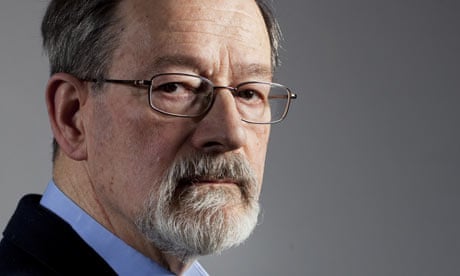Two young Dutch men walked into a nursery school in Amsterdam one day in 1944 and asked for Martin Stern. The teacher told them he hadn't come in that day. "I put up my hand and said: 'But I am here.' Stern, now a retired immunologist, is recalling that fateful moment as dusk gathers outside his sitting room in Leicester. "The poor woman was trying to protect me. I'll never forget the look on her face as I was led away." He was arrested, aged five, because his father was a Jew.
Martin and his one-year-old sister Erica were taken to Westerbork transit camp in the Netherlands, where they were housed in wooden huts, each one crammed with as many as 800 people. "The food consisted of vegetables unfit for sale. Old runner beans that hadn't been stringed were nicknamed 'barbed wire' by the boys I was with because they were painful to eat."
Martin's parents were Germans who had fled to Holland before the war. His non-Jewish mother died in hospital shortly after giving birth to his sister. His father was hidden by courageous farmers near Amsterdam airport after the German invasion of Holland, only to be captured by Nazis after a shoot-out in which he apparently killed two of them. There is a photograph of Martin's father on the sitting room wall, taken before he left Germany. It shows a young, smartly dressed man with, you might think, a bright future. "As you can see, he was well-to-do," says Martin. "He died a skeleton of a man on 25 March 1945 in Buchenwald."
Martin and Erica were looked after by two separate Dutch families for two years before they were arrested. "I lived near the Anne Frank house," he says. After Martin's abduction from nursery school, Cathrien and Jo (short for Johannes) Rademakers, who had looked after Martin, were themselves arrested. For the crime of caring for a five-year-old Jewish orphan, Jo was sent to Neuengamme concentration camp near Hamburg, where he died. All his wife got back were his spectacles.
At Westerbork, Martin would each week see trains of cattle trucks being packed with people he knew. "They looked like ordinary railwaymen cramming people in. Why were they doing that? It was a puzzle for a five-year-old." There were signs marked Auschwitz or Sobibór on the side of the trains but the prisoners did not know the significance.
"One day my train came and, remarkably, it was a passenger train." He and his sister travelled together and, at a huge German station, were transferred to cattle trucks heading for Theresienstadt, where the Nazis had established a walled ghetto. It was on the three- or four-day journey that Martin saw his first corpse. "I couldn't travel on trains for years without being reminded of the clickety-clack, clickety-clack of the train going to Theresienstadt. Thanks to modern welded rails I am no longer reminded of that noise every time I go on a train."
A Dutch woman, Catharina Casoeto de Jong, imprisoned in Theresienstadt for the crime of marrying a Jewish market trader, began looking after Martin and Erica on their arrival, bringing them food from the ghetto kitchen where she worked and housing them in a series of overcrowded dormitories. Mrs De Jong daily risked murder for her compassion – smuggling food from the kitchens was punishable by summary execution. "Theresienstadt had the reputation of being a paradise for captured Jews," says Martin. "It was better than Auschwitz, but no paradise.
"One morning, Mrs De Jong woke me up. The Red Army had liberated the ghetto and I had slept through it all. They had moved on before I got up because typhus was rife in Theresienstadt and the last thing an army needs is exposure to typhus."
After a harrowing journey home by train and river barge with Mrs De Jong, Martin and Erica were reunited with their adoptive mother in Amsterdam. He lived with Cathrien Rademakers for only a few months and then the two children were both raised by the Bangmas, the couple who had looked after Erica before her arrest. When Mrs Bangma died, Erica and Martin, by then aged 12, went to Manchester to live with his father's sister, who had managed to escape to Britain before the war, and her husband. "It was not easy starting again with people we didn't know and a language that was strange to us."
Martin describes his survival this way: "Surviving is like undoing a combination lock by chance." But he and Erica did more than survive – they flourished. Martin studied medicine at Oxford, becoming an immunologist and an authority on asthma. Erica returned to the Netherlands, where she taught at the University of Utrecht. She married but had no children, and died in 2007. Martin now lives in retirement with his wife and has three children and four granddaughters.
Now 70, he spends a lot of his time telling his story to children. "The expression 'Never again' has become a cruel mockery," he says. "We won't solve the problem by UN resolutions on genocide. The only hope is that in the future every child in the world should be educated to immunise it against the tendency to hate others and to regard others as inferior."






